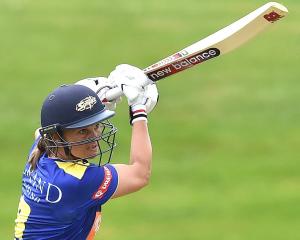The state of grass-roots cricket came under scrutiny recently when the Dunedin Cricket Association announced plans to conduct a review to address a drop in playing numbers. Former long-serving player Michael MacKenzie offers his thoughts on the issue.
In 1988, when I first joined the senior part of the Taieri cricket club, we had seven teams competing in Dunedin competitions.
We had a thriving twilight competition on the Taieri, which was a huge revenue earner for the club.
Brooklands was packed with teams training right throughout the week.
Today, 26 years on, Taieri has only two teams and no thriving twilight competition.
What has happened?
Cricket presents many challenges, not least of which is the length of time it takes to play.
The introduction of weekend work has also had an impact.
Kids today are totally different from when I was coming through the system.
They want instant gratification, and they are not as willing to stick with something if they don't see a real benefit in it for them.
In my job as a sports co-ordinator in secondary schools, I see this sort of scenario all the time.-John Smith signs up to play cricket and is picked in the team as a batsman.
He is a kid of average ability, goes out to play, gets out third ball for a duck, trudges back to the pavilion and sits there for the next two hours, watching his mates bat.
After the change of innings, he fields for three hours. He doesn't get a bowl. He stands there wondering, ''What the hell am I doing out here? I would rather be at the beach surfing or out cycling or running or, in most cases, playing on some electronic device.''
Back when I started, we had heaps of players like John Smith. The difference was they stuck at the sport regardless of ability or talent, and there were no electronic devices or the choices of sport there are for kids today.
Club v School
In my view, all cricket now should be club-based.
Everyone knows there is a drop-off when kids go from primary cricket to secondary school, the reason being that secondary schools are no longer set up with the resources or skill or knowledge to keep a sport like cricket alive.
You also lose a lot of parents who have come up with their son or daughter through the junior ranks, but as soon as they hit high school, they can no longer fit in the after-school trainings. Parents are more likely to stay involved if they could run a training after their work commitments, which aligns better to a club model.
Secondary school cricket should just run a midweek twenty20 competition, freeing up all the best players in the schools to play for clubs.
The average players can have a hit midweek then decide if they want to commit to a Saturday team.
This way, we are catering for all players and keeping them in the game, whether it be midweek or the weekend. The really good players in the first XIs get a T20 hit midweek with their school, and then really good competitive cricket for their club in the weekend.
The key to this working is clubs getting organised and being well-supported by the Dunedin and Otago cricket associations.
Player depth
In 1990-91, I played in a colts team that won the Dunedin senior competition. We were players who would go on to represent Otago in the national under-20 tournament, and ultimately win. Our player-coach was Mark Richardson.
Club cricket was thriving. I can remember, as a very young 15-year-old, making my senior debut against Albion, playing against Stu McCullum, Grant Ford, Kevin Gallivan and Tony Branks.
Green Island had the Payne brothers, Shane Robinson, Murray Griffin, Peter Hills and Grant Parata, North East Valley had Wayne Blair, Mike Campbell, Stephen Boock, a young Robert Lawson and Rhiane Smith, and Kaikorai had Neil Mallender, Vaughn Johnson, Lindsay Bartlett, Ron Hutton and Ian Billcliff.
The clubs had great depth and players stuck with the game.
You could be selected in the Otago team from performing in club cricket. Now, the use of centralised contracts means little importance is attached to club cricket, and with a very poor A competition for the players underneath, they have little to play for.
My other concern is how the Volts players that come to the region are spread around the clubs.
Someone at Otago cricket needs to take control of this process and evenly distribute these players. This, in my view, is not happening and has a real impact on the clubs that tend to miss out on these players.
The reality is now you will only have them for a handful of games, but that can really make a difference to the performance of the team, and the morale of the club.
Do you agree with MacKenzie's thoughts? Or are there other issues in club cricket you think need to be addressed? Email us (sport@odt.co.nz) with your views.













